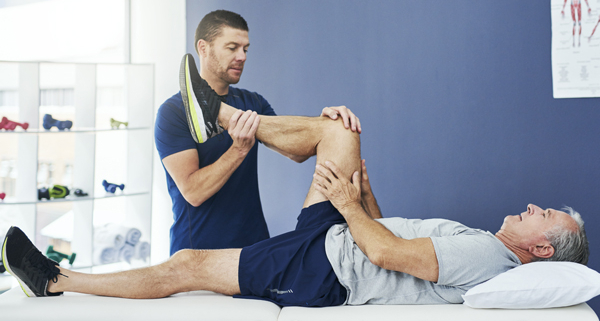Arthritis Rehabilitation

Overview
Arthritis refers to more than 100 diseases and conditions that primarily affect the joints—the places where your bones connect—such as your wrists, knees, hips, or fingers. However, arthritis can also impact your connective tissues and other organs. If not appropriately managed, arthritis can influence your physical abilities and quality of life. Arthritis rehabilitation is a specialised form of therapy designed to help individuals improve their mobility, recover physical function, and manage their arthritis symptoms better.
Types
There are a variety of arthritis types, but the most common include:
1. Osteoarthritis
2. Rheumatoid Arthritis
3. Psoriatic Arthritis
4. Gout
5. Lupus
Each of these types affects the body in different ways and may require different forms of rehabilitation.
Causes
The causes of arthritis depend on the specific type. Osteoarthritis, the most common form, is caused by wear and tear on the joints. Rheumatoid arthritis, on the other hand, is an autoimmune disorder where the body’s immune system attacks its tissue. Other contributors can be genetic factors and a history of joint injury or repetitive strain.
Symptoms
Arthritis symptoms include:
1. Joint pain
2. Stiffness
3. Swelling
4. Redness around the joint
5. Decreased range of motion
If you exhibit these symptoms, consult a healthcare provider for a definitive diagnosis.
Diagnosis
A combination of physical examination, medical history, laboratory tests, and imaging studies is used to diagnose arthritis. This might involve blood tests or X-rays to identify the type of arthritis.
Treatment Options
Treatment for arthritis aims at relieving symptoms and improving joint function. It may involve:
– Medications: Including over-the-counter analgesics and topicals, and prescribed nonsteroidal anti-inflammatory drugs, disease-modifying antirheumatic drugs, or biologics.
– Physical therapy: This may involve exercises or postural corrections to aid mobility and strength.
– Surgery: For severe cases, joint repair, replacement, or fusion surgeries might be recommended.
Living With Arthritis Rehabilitation
Living with arthritis can be a challenge, but you can still lead a fulfilling life by managing your symptoms effectively. Some practical tips include:
– Implementing a daily routine of exercise to maintain joint flexibility
– Watching your weight to avoid adding pressure on your joints
– Using assistive devices like canes, shoe inserts or splints for support
- Managing pain through heat or cold therapies
– Attending regular check-ups with your healthcare provider
When to Seek Help
If you see an increase in joint pain, swelling, or stiffness, it’s essential to seek medical advice. Also, if you experience unexplained weight loss, poor sleep, or inability to perform routine activities, reach out to your healthcare provider at earliest.
Above all, remember that you are not alone in your struggle with arthritis. With modern medicine and therapy, many individuals are empowered to live fulfilling lives with arthritis. Seek support from friends, loved ones, and professional counselors to maintain your mental health along with your physical health. Regular practice of relaxation techniques such as deep breathing or meditation can also have positive effects on your overall sense of well-being.
